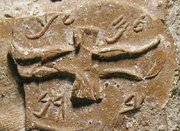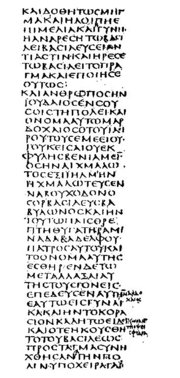A reader writes:
Mr. Akin,
I have listened to you on EWTN’s Radio program ( when the reception is audible) and really enjoy your program and answers.
I have been struggling with some Faith questions for some time now re: Bible events and have tried not to think of them because of fear of the loss of my faith. However, especially lately when I listen to the Gospels, these questions have been insistently coming up.
ie; Who was there when?…….
The angel Gabriel spoke to Mary?
So far as we know, it was Gabriel and Mary. Others may have also been present, but even if so, we don’t know if they saw or heard Gabriel or if that was given only to Mary.
When the devil spoke to Jesus in the desert for 40 days?
So far as we know, Jesus and the devil during the actual moments of temptation (testing), though I’d suspect that other folks ran across Jesus during this period. Also, after the testing, angels came and ministered to Jesus.
When the ‘Babe lept’ in the womb of Elizabeth?
So far as we know, Mary, Elizabeth, and the two unborn babies. Zechariah and possibly others may also have been present.
Etc.
These are Gospel ‘stories’ and I assume they are to be taken as Truth. Today’s Gospel was of Jesus’ 40 days in the desert. St. Matthew wrote this Gospel. Or did he?
Despite the talk you hear, much of which is based on bias rather than evidence, I have no reason to think anyone other than Matthew wrote the gospel attributed to him. Indeed, the very fact that Matthew’s name is on it is evidence that he wrote it. Claims need to be taken at face value unless there is reason to doubt them. If you adopt a hermeneutic of suspicion regarding historical sources, whereby every source is "guilty until proven innocent," you’ll cause virtually all of our knowledge of the past to go out the window. That is simply unreasonable.
Further, Matthew was a minor apostle apart from his gospel, so if you were going to make up an attribution to make a gospel sound impressive, you’d pick someone other than Matthew.
Similarly, Matthew was a former tax-collector, a group hated and despized by first century Palestinian Jews. Yet Matthew’s gospel is the most Jewish of all the gospels, written with a clearly Jewish audience in mind. If someone were going to write a gospel for a Jewish audience and then make up a name to slap on it, they’d pick someone other than a tax-collector like Matthew.
Consequently, I have no reason to doubt the traditional attribution of Matthew.
There is a lot of controversy about who wrote what Gospel. Despite that, someone had to be a witness to these events didn’t they? These events had to have an author.
The gospels and other books of Scripture have to have authors, but the author doesn’t have to be there for every event they record. As historians (even if not historians of the kind we have today), the authors of the gospels talked to people who were there for the events they describe. It has long been thought, because of his focus on Mary in the early chapters of his gospel, that Luke spoke to Mary as a source. If not her, then another member of the family who preserved the family’s knowledge of the events surrounding Jesus’ birth.
Similarly, though Jesus was (so far as we know) alone with the devil during the temptation, that didn’t stop Jesus from telling the disciples of the event or them writing it down afterwards.
In each of these cases, the witness from whom the knowledge of the event springs is likely the person who experienced the event.
In the Annunciation, I would think Mary’s modesty would prevent her from telling anyone about the Angel Gabriel.
I don’t think I by this. I think you are likely projecting your own (praiseworthy) modesty on to Mary. I think Mary (a) would want to glorify God by telling people what marvels he was doing and (b) would be forced to disclose what happened by her ensuing pregnancy. She couldn’t simply get pregnant with no explanation of how it happened.
My questions go on and on.
My question for you is: Without my having to spend an exorbitant amount of time looking up books and reading mega pages, could you possibly direct me to somewhere or someone where I could get some answers to these Faith questions???
I would really appreciate any help you could offer. Surely, you must have struggled with some of the same questions at some point in your faith journey?
I did. And I hope the above responses are helpful for the questions that you mentioned. You’re welcome to e-mail further questions for answers here on the blog. I’d also recommend visiting these two sites:
Hope this helps, and God bless!
 We’ve found something like 2000 clay seal impressions in Israel that contain the legend LMLK (lamed, mem, lamed, kaf).
We’ve found something like 2000 clay seal impressions in Israel that contain the legend LMLK (lamed, mem, lamed, kaf). 146 year ago today, Aleph was found.
146 year ago today, Aleph was found.